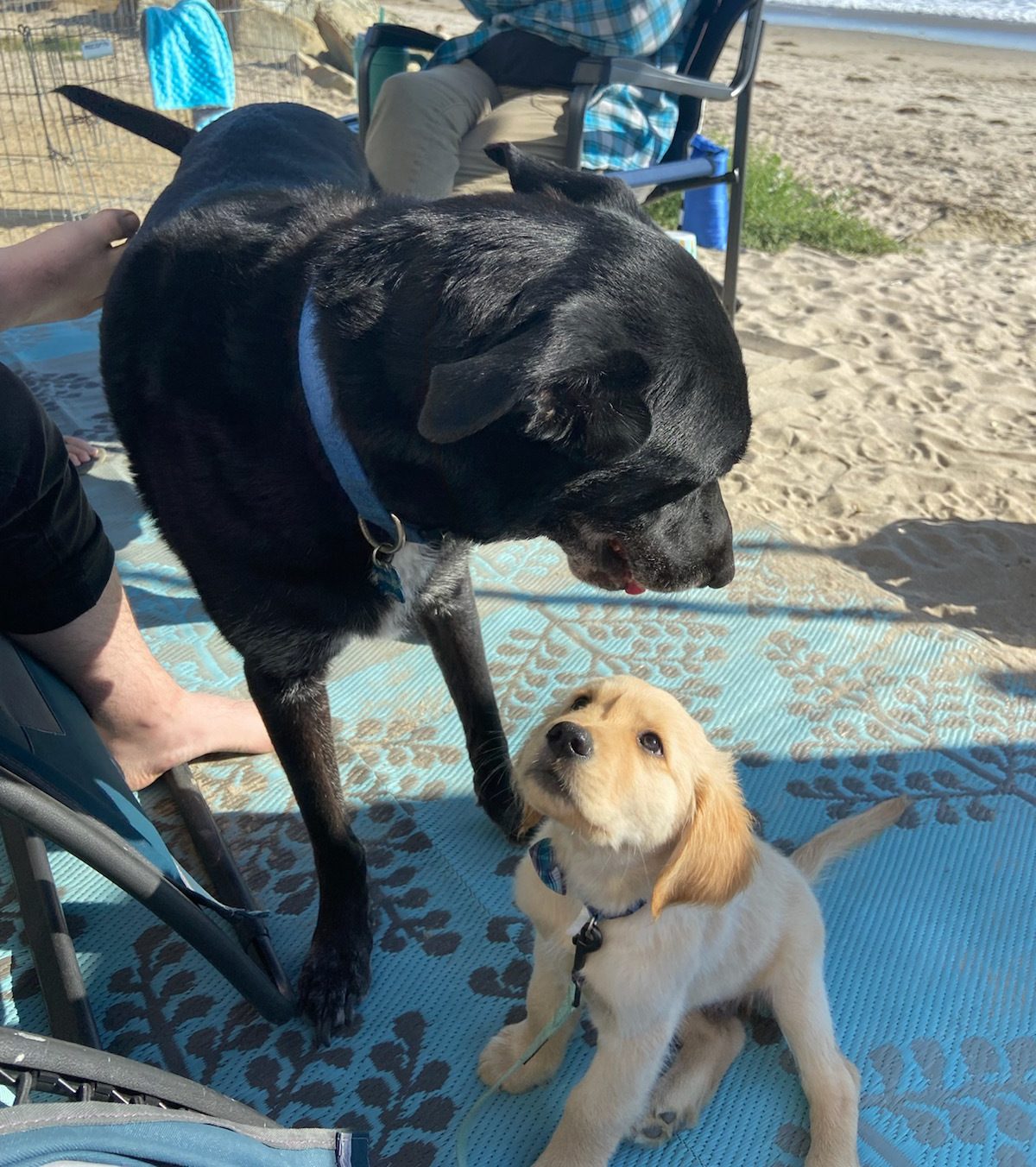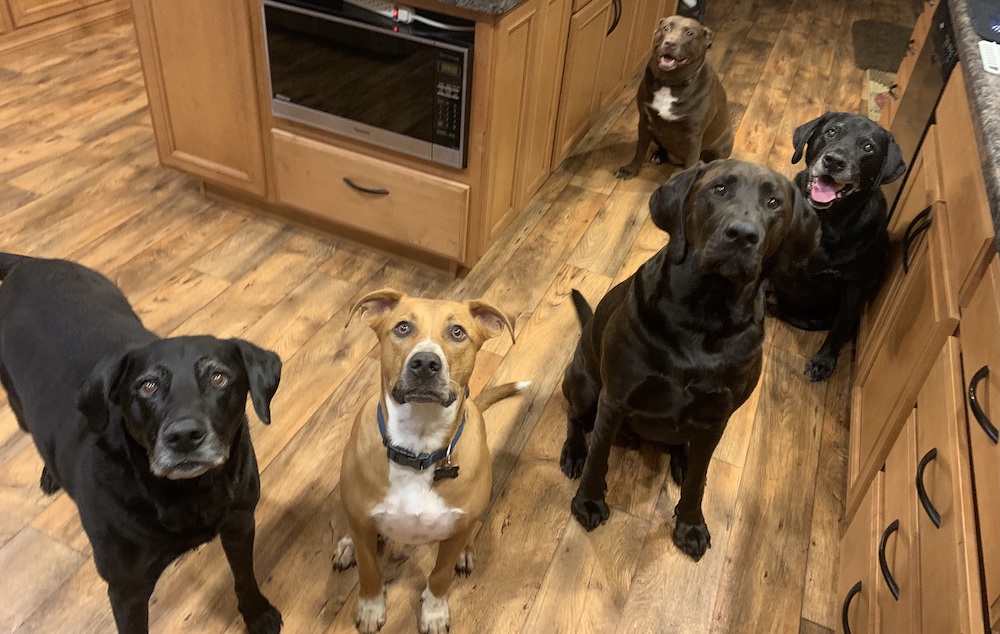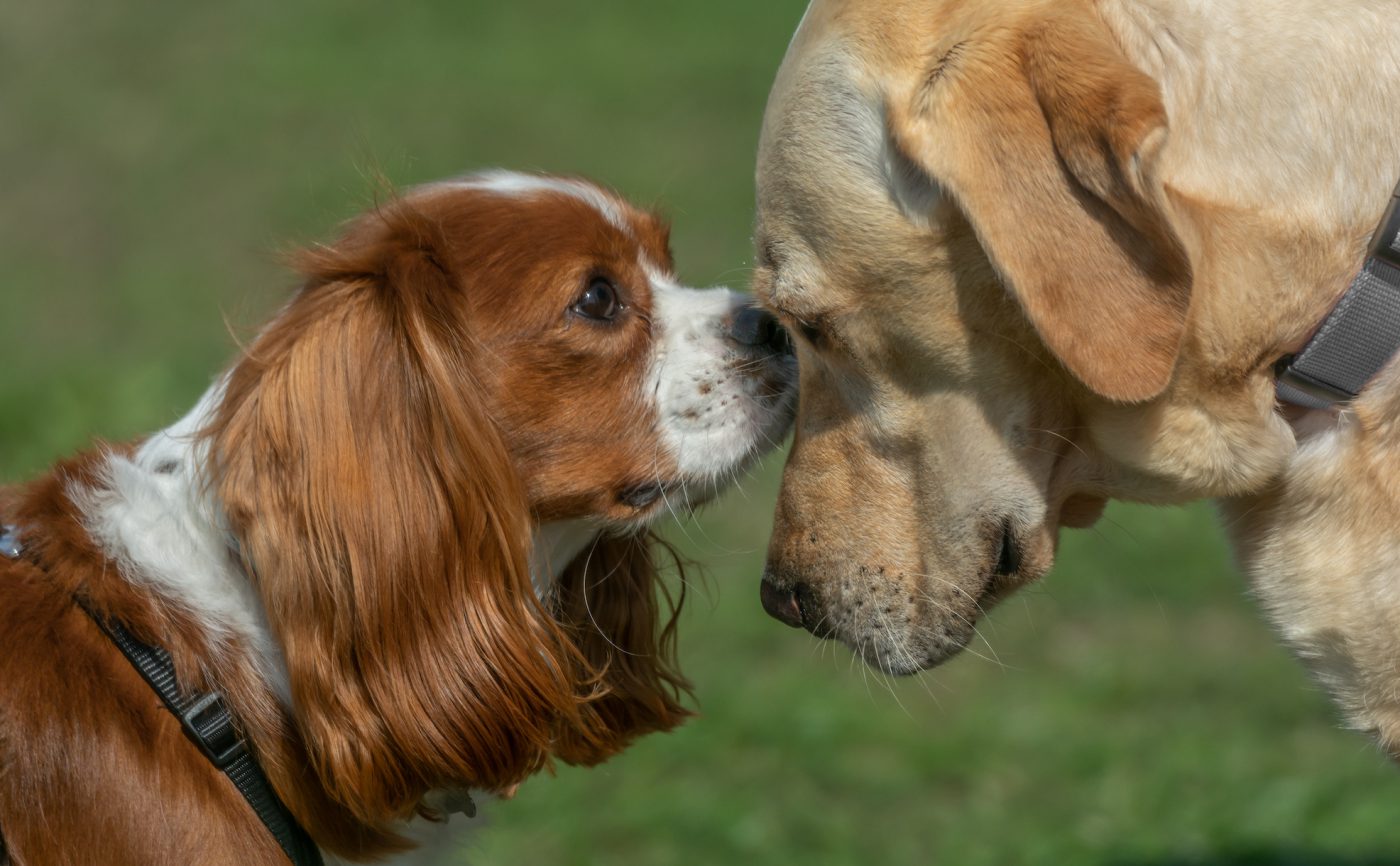If you have a dog has ever met other dogs (and we bet they have), maybe they didn’t get along right away. Perhaps they got into a barking match over a favorite toy or a bed, or their temperaments were not an immediate fit. Fortunately, there are methods you can use to ease dogs’ introduction to one another—increasing the likelihood of their harmonious coexistence. If you’re looking to help a couple of dogs acquaint without complaint, read on for the tips in our meet cheat sheet.
Ask first
The first step to any dog meeting is a discussion in which the humans agree that such a meeting is a good idea. If you don’t know the other dog’s history and personality, check in with someone who does. Hearing their response will give you a better understanding of the work that you may have ahead of you.
If the dogs both have a history of interacting peaceably with—or simply tolerating—other dogs, you could follow basic steps like:
- Go for a walk
- Have the dogs hang out off-leash in a contained area like a yard
- Move indoors only after removing sources of conflict like food bowls, toys, etc.
If either dog has had issues with other dogs or is socially selective—and most are, to some extent—you may have to think more about your strategy. Denise Herman, founder and head trainer at Empire of the Dog in New York City, paraphrases Ted Lasso to make the point: “All dogs are different dogs.”
Whether you’re willing to put in the work to build a relationship between two dogs depends on the degree of difficulty and what you have to gain. “What’s on the line meeting this dog?”, asks Herman. “Is it a partner, and you want to spend the night at their house? Is it someone who’s coming to visit you, and they’re bringing their dog and they’re going to be staying overnight? Because that’s going to define how long we should take for this process.”

Know your dog
Consider your own dog before rushing into a greeting. How do they fare around humans and canine strangers? Do they need more training before embarking on this journey?
Spend time on some training fundamentals that develop a line of communication so you know how to reliably get more of the behavior you want, and less of the behavior you don’t want, says trainer Blake Rodriguez, founder of Dream Come True K9 in New York. Ask: could you stop your dog mid-tracks when they’re going after a ball or charging at the door when the bell rings? If not, it’s a great skill to work on before dog meetings.
If you can find a past situation where your dog met another dog and it went really well, Herman says, “that’s a model we can look at so can we recreate a version of that.” In other words, if your dog has done well in the past meeting other dogs in a certain environment for a certain amount of time, your best bet is to repeat what’s worked.
Keep in mind that dogs’ personalities differ. If yours is more selective, and less inclined to bound enthusiastically into new dog interactions or friendships, don’t force it. As long as they’re not acting aggressively toward dogs they meet, there’s no need to worry about it. Some dogs, Herman says, “can coexist with another dog and they might play next to them, but they’re just not wired the same way… I think one of the things we have to start doing is accepting dogs as who they are and not making things a problem that aren’t really problems—they’re just traits.”
If your dog is aggressive or reactive to other dogs—or if you’re not confident that you could redirect them from any high-intensity activity—consider hiring a professional trainer to work through some basic training or specific behavioral issues; it’ll enhance their quality of life and yours.

Go for a walk or two first
Once you’ve agreed that the dogs should meet, a walk is a smart first step. Because a walk takes place outdoors and allows the dogs to keep some distance between each other, they can get used to each other’s presence gradually. Perhaps over the course of multiple walks, praise them for calmly strolling with the other pup.
Group activities like walks, in which the objective is not primarily about the dogs meeting, can help smooth the path to a cordial relationship between them in the long run. Rodriguez says that these encounters can help dogs get comfortable with each other as they’re “operating together as a team.”
Keep the treats out of it
Herman cautions that treats could spur discord when dogs are meeting each other. “You typically don’t want to introduce food in a situation like this,” she says, “because that’s going to be another resource, and we don’t know how those dogs are going to react.”
Make barriers your, and their, friend
Herman also offers an exercise for humans who want to be extra cautious. “One thing I do with dogs when the rubber meets the road,” she says, “if one of the dogs is dicey and we’re going to put the bitey parts near the other bitey parts, is I go find a chain-link fence somewhere and we co-walk on either side of the fence—letting the dogs decide when they want to sniff. We put this natural parallel muzzle between them so the leash can be loose, the dogs can put their noses up to each other, and they’re not going to be able to injure each other.” If the dogs show any signs they’re not getting along, she says, “then I can move one of them away from the fence and they get a little break.”

Supervise the dogs
For a first meeting, you should supervise the dogs at all times to make sure their interactions are going well. Even once they know each other, there are many factors—differences in personality, age, size, and energy level—that could lead to problems if the dogs are left alone. “There’s a lot of risk and very little gain from leaving them alone unsupervised,” Herman says. If you do decide to leave two dogs alone once they’ve known each other for a long time and get along well, consider using a monitor to check in on them.
Keep in mind, though, not to supervise in a way that may make the dogs more nervous and likely to clash. For situations where one or both dogs are on leash, Herman says, “if you’re gonna go in, be in. Loosen the leash. The idea of letting them barely sniff and holding the leash really tight so you can jerk them out if something bad happens—you’re more likely to make something bad happen.” Dogs are experts at picking up on human cues, which is one reason trainers often say that “tension travels down the leash.”
If this idea makes you nervous, or you just aren’t ready to let your dog interact with another pup, continue working with them. Rodriguez suggests having a reliable “interrupter” you can use if your dog needs to stop in the middle of an action. You’ll know that this command works if your dog will come to you even in the face of an exciting stimulus like a doorbell, a toy, or, yes, another dog.
Let them sniff
Dogs gather a lot of information through their noses, and will get to know each other better by using their sense of smell. They’ll probably approach the rear end first and smell one at a time. While some dogs may go for the nose first, says Herman, “That’s like someone coming up and going ‘I’m a hugger!’ And they start grabbing and hugging,” says Herman. “If you’re not a hugger too, that might not be appreciated.”
Dogs have a better chance of getting along if they accommodate each other’s personalities. “There’s going to sometimes be one dog who’s a little more uncomfortable,” says Herman, ‘and often that dog’s gonna take the lead and say, ‘I’m going to sniff you.’ And the other dog’s going to say, “Alright, I’m gonna sit here and be sniffed.’” She explains it in terms of manners: “Dogs have conventions like humans have conventions, primates have conventions.”
Humans can play a role in modulating the energy levels of non-aggressive dogs whose greeting styles may not be a perfect match. Techniques may include keeping a more relaxed dog on leash while the more nervous dog sniffs and withdraws in a comfortable rhythm, or petting one or both dogs in order to, as Herman says, “distract him so the other dog can get a couple of good sniffs in.”

Watch their body language
Don’t wait for a crisis to separate dogs who aren’t getting along. If either dog shows signs that they’re becoming anxious or may get aggressive, de-escalate. It’s much better to prevent a dog fight than to have to break one up. Herman says to watch out for “protracted stiffness” from one or both dogs, along with “going face-to-face for many seconds.” Other familiar signs of stress or aggression—like a tail between the legs or in a high position, licking lips, or bearing teeth—would also call for de-escalation.
On a related note…
Let the dogs set the pace
Like The Supremes (and, later, Phil Collins) sang, “You Can’t Hurry Love.” There’s no need to rush dogs into becoming buddies. Not all dogs are going to like each other—but even if these two are destined for friendship, it’s only going to happen as quickly as they let it happen. You want them to have time to develop positive associations and trust. If you’re introducing a puppy and an older dog, be aware that the adult dog may need some extra breaks—“puppy energy” is a phrase for a reason.
“You have to protect older dogs and selective dogs a little bit,” Herman says. “You don’t want them to always have to be taking the volume up to 11 to get the other dog to back off. It’s not fair to the other dog either, because they’re constantly getting screamed at for normal dog stuff.”
If you suspect that one dog may be much more energetic than the other, it can also help to make sure that the peppier dog is tired when the two meet. A long walk or fetch session beforehand can make a big difference.

Once you move indoors, prepare the space
If you’re moving indoors, remove potential sources of strife. A dog who’s in their own home may feel compelled to protect their bones, toys, food bowls, etcetera. If those are gone at the first meeting, the pups will have a better chance of getting along. You may also want to let the dog who doesn’t live in the home enter first so they’ll have a chance to sniff around and explore. Then, suggests Herman, have the indoor meeting start in “a wider space that has less stuff, if possible.”
Setting the stage this way improves your outlook. Any dogs who know each other long enough may have some moments when they don’t see eye to eye, Herman says. “You just don’t want that to be the opening ceremony to their friendship.”
In conclusion…
Herman says that a key to successful meetings is knowing and respecting dogs’ personalities. “Most dogs can have some friends,” she says, “if we honor their selective nature and don’t try to cookie-cutter them.”
If you’re still having trouble, remember that it’s never a bad idea to introduce yourself, and your dog, to a professional trainer who can set said pup on the path to better citizenship and a happier life.









